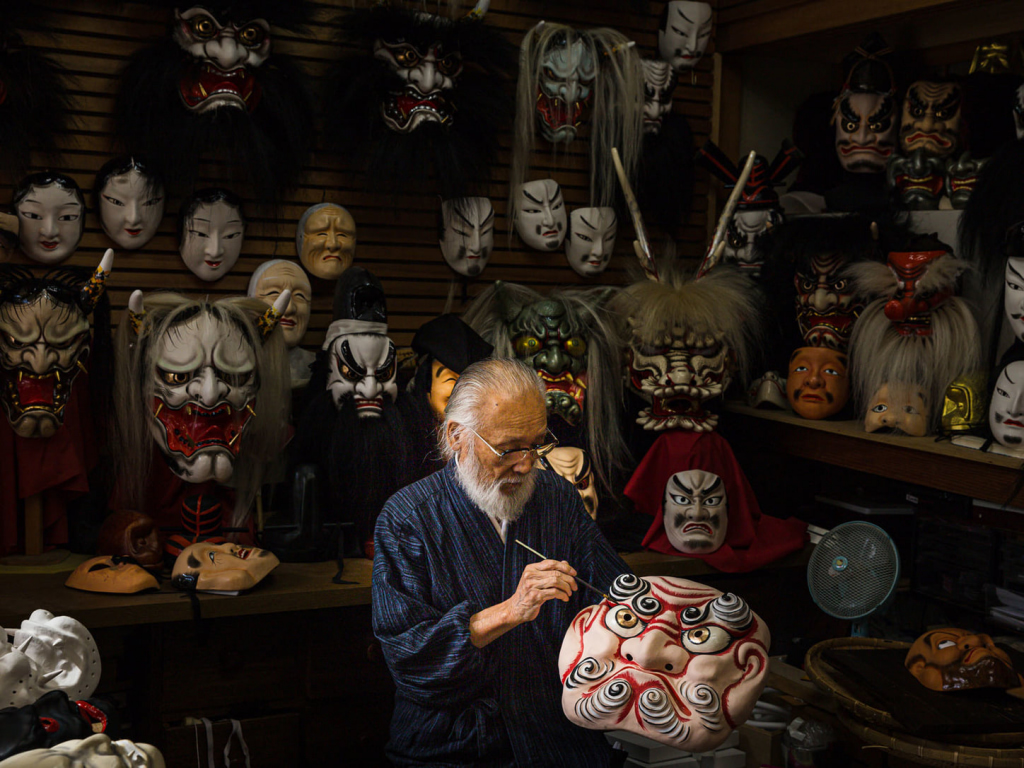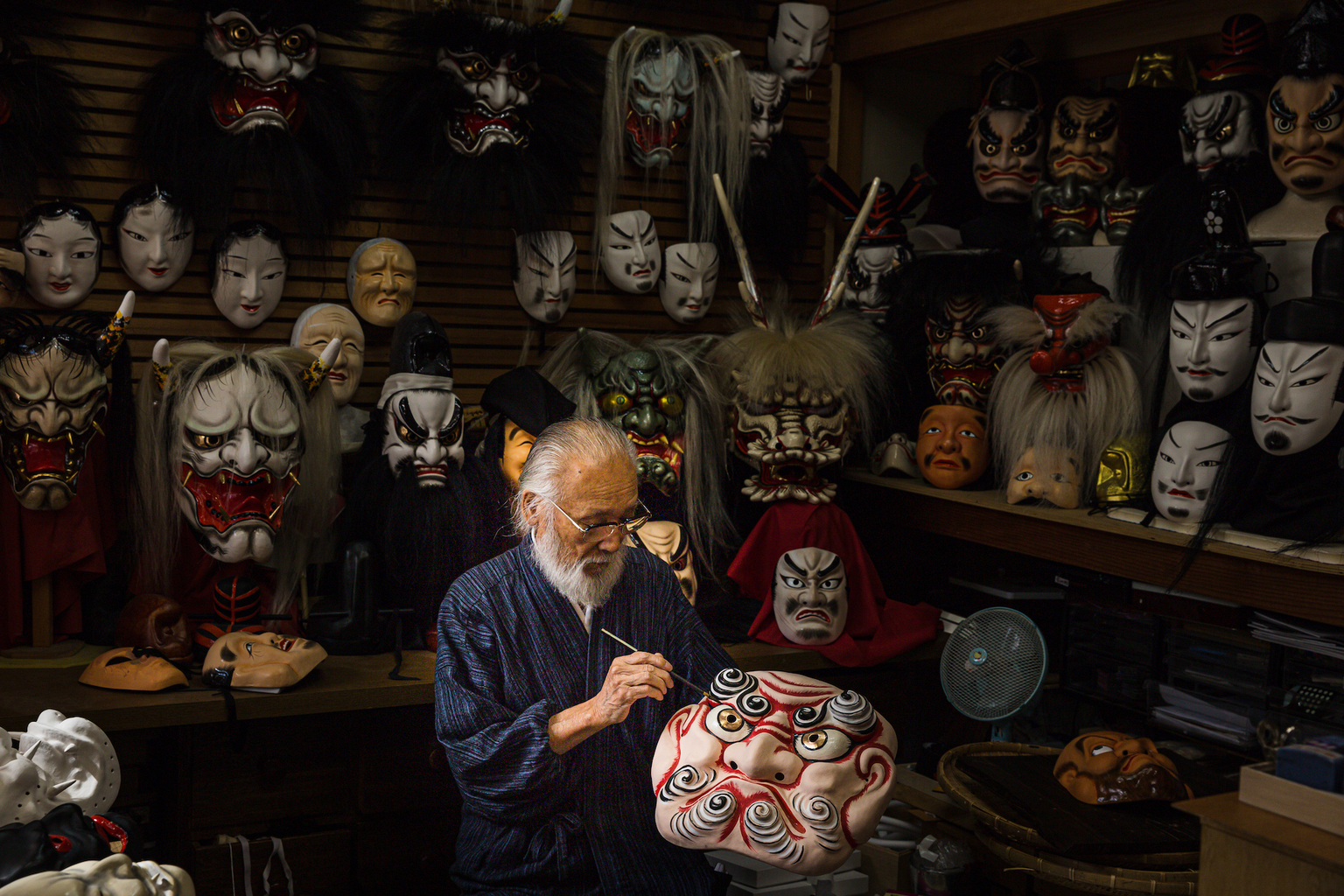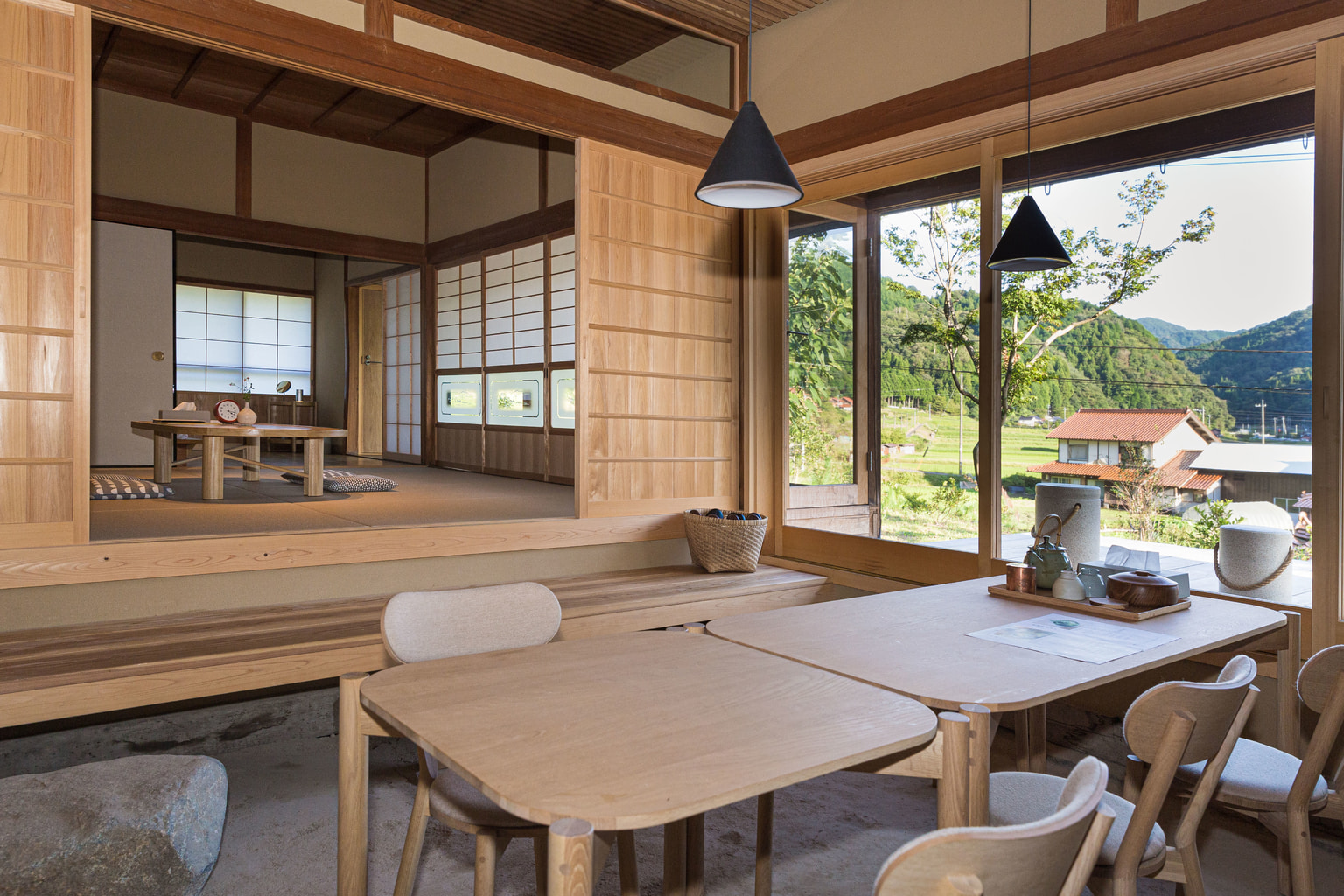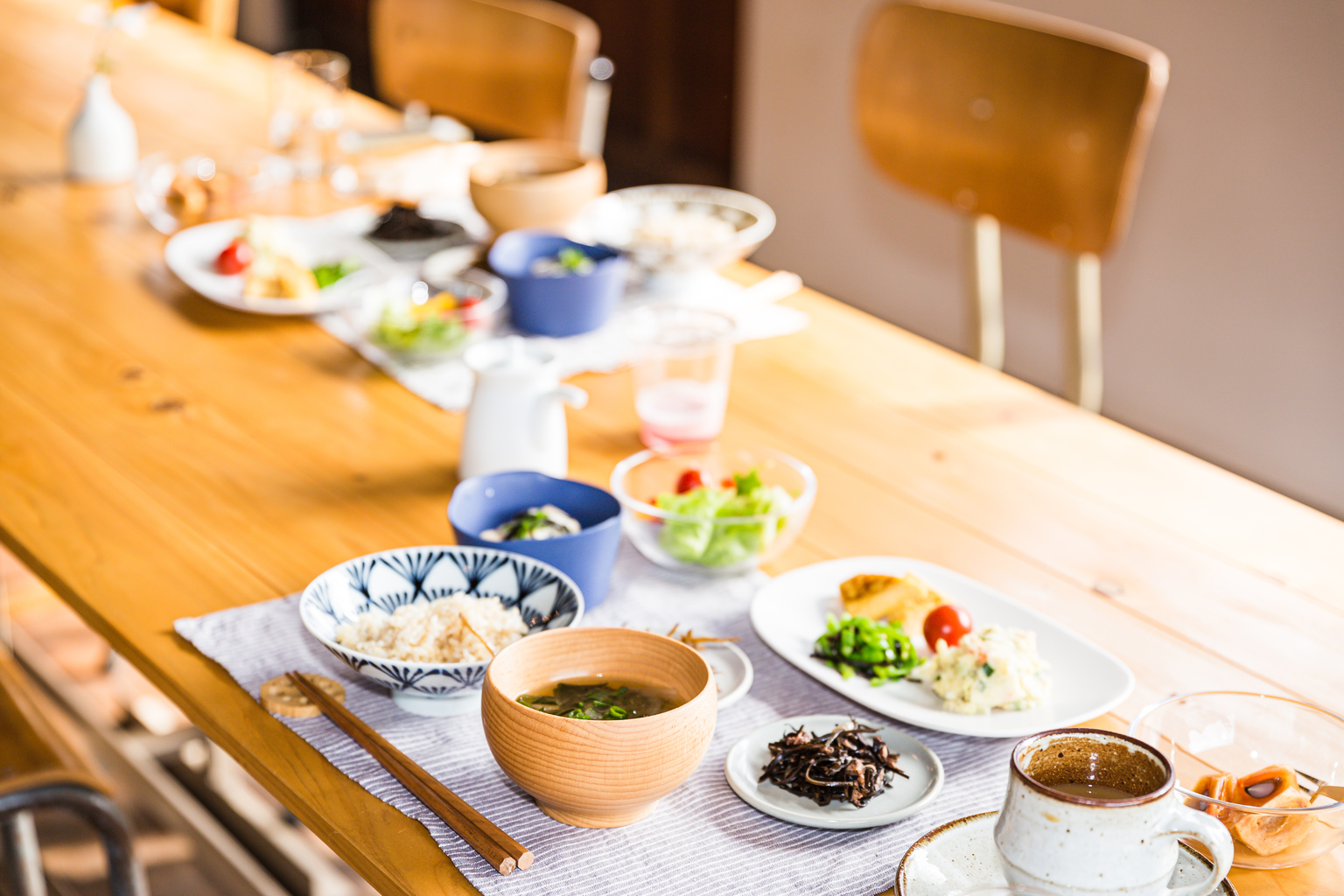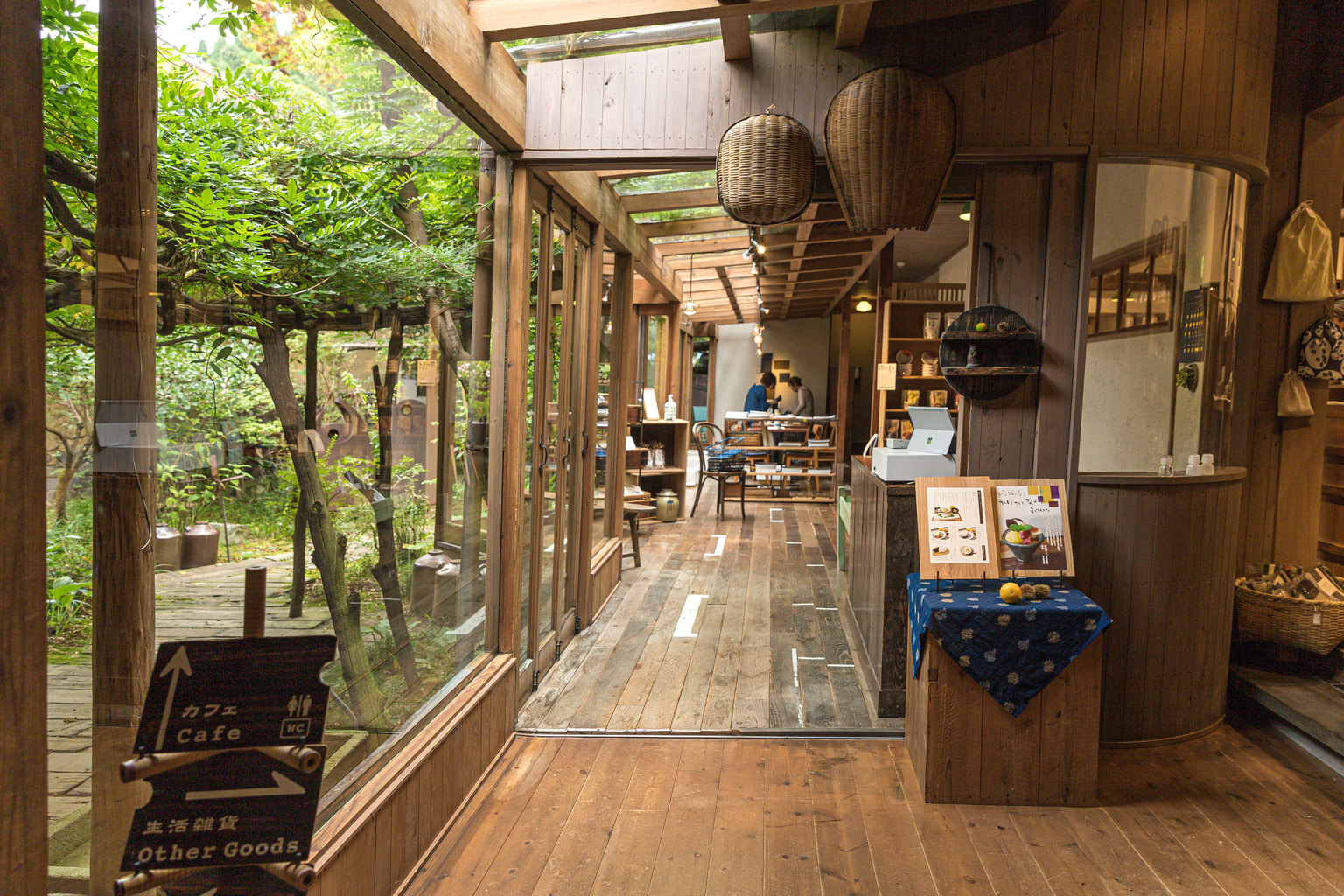A visit to Shimane Prefecture, which hugs the Sea of Japan coastline in Honshu island’s southwesterly San’in region, defies easy categorization. Accessible by car in just 90 minutes from Hiroshima, the prefecture nevertheless still feels remote, and is one of Japan’s least visited. It is also known for nurturing traditions long forgotten elsewhere in the country. At the same time, it is home to cutting-edge arts and design initiatives that have creative professionals nationwide – and overseas – taking close note.
Shimane’s Unique Form of Kagura
Iwami kagura, a lively local dance depicting mythological Shinto stories, is a particularly lively form of Japan’s traditional kagura performing art. Said to date back to Japan’s earliest historical chronicles, although its exact origins are unknown, the dances are held to pray for bountiful harvests and good health. The performances are often held at local shrines, going on throughout the night.
We watched a nighttime performance on the grounds of a small forested shrine in Hamada, a coastal city described by one brochure as “Where kagura is life.” We ordered yakitori from a food stall and settled in among locals in front of a crackling open-pit fire to watch what unfolded next. And it was nothing short of magical: dancers clothed in fantastical costumes to represent demons and gods, frenetically dancing and battling onstage to the backdrop of joyful live music. With some 400 local groups, one of Iwami kagura’s unique elements is its commitment to pass down the tradition to successive generations – presumably some of the exuberant youngsters we saw among the audience.
“Iwami kagura is unique because features many women performers, making it one of the more progressive kagura styles nationwide”
Another standout feature of Iwami kagura is its use of delicate yet robust washi (traditional Japanese paper) for its costumery. The following day, we paid a visit to master mask artisan Katsuro Kakita to probe the intricacies of his craft and the history of local kagura. He explained that a Meiji-era edict banned shrine attendants from performing ritualistic kagura, which subsequently began to be performed by villagers.
“Iwami kagura is unique because we have a whole range of historical stories that appeal to people of all ages,” Kakita explained. “It also features many women performers, making it one of the more progressive kagura styles nationwide.”
“I have to think about the expressions and emotions of the characters when making each mask,” Kakita added. He crafts his masks using sekishu-banshi, a style of washi paper made from local mulberry trees, which can last more than 1,000 years and has been recognized as a UNESCO Intangible Heritage. A short drive from his atelier is the Sekishu Washi Kaikan, which offers workshops and sells an array of washi crafts.
Hinui Hitohi: Unwinding, Shimane-style
We stopped at the nearby Yuhi Park Misumi roadside station, where we were lucky enough to glimpse the infrequently running San’in Main Line train as it emerged from a tunnel around the mountain bend. It was as glorious and picturesque as coastal scenes go.
Our next stop was about a 40-minute drive inland to the town of Onan, where a group of designers, architects and artists have launched a collaboration to draw visitors to their sleepy corner of the prefecture. Called Hinui Hitohi (A Day in Hinui), the initiative features two renovated traditional homes: one for sleeping and the other for communal breakfasts and events.
“The overnight home is artfully designed and features atmospheric lighting, a fragrant hinokiburo and kitchenware designed by local ceramic artists”
The overnight home is artfully designed and features atmospheric lighting, a fragrant hinokiburo (Japanese cypress wooden bathtub), aromatherapy body products and kitchenware designed by local ceramic artists. Guests who opt for the evening meal will have a basket of fresh ingredients such as Iwami pork and local vegetables delivered directly to the kitchen, along with menu instructions crafted by culinary director Atsushi Nakahigashi (from the family who runs famed Kyoto kaiseki restaurant Nakahigashi). Guests are then left on their own to cook and feast, which underpins the whole project concept: spending quality time together in an undisturbed natural setting. This includes a serene temple and shrine that are both located adjacent to the grounds – perfect for a pre- or post-dinner walk.
Iwami Ginzan: Back to Our Roots
An hour’s drive northward, in the coastal city of Oda, lies the former Iwami Ginzan Silver Mine, which operated for 400 years from 1526 to 1923, and was granted UNESCO World Heritage status in 2007. Besides tours of the facilities, visitors can walk – or bicycle – around the recreated town to get a feel for Edo-era Japan.
The town of Omori (population 400) is home to numerous artisans engaging in monozukuri (craftsmanship) and runs a unique local initiative known as Gungendo. Taglined “Creating life with roots,” it aims to encourage slow lifestyles. Its flagship store’s brochure encapsulates the ethos perfectly: “One single thread becomes cloth; and from there a garment. You can feel the story that has been woven therein, which is when a fusion between people and clothing occurs.”
Matsue: Elegant City on Water
We continued northward toward prefectural capital Matsue, which sits at the intersection of two large lakes at Shimane’s northeastern coastal edge.
Our first stop was the Izumo Quilt Museum, a 200-year-old renovated structure ensconced within rice paddies on the southern banks of Lake Shinji, just opposite Matsue. The cozy venue – Japan’s first quilt museum – houses the personal collection of resident Mutsuko Yawatagaki. It includes several rooms with seasonally rotated quilts fashioned from kimono cloth, each seemingly more sumptuous than the last. Also featured are ikebana installations and an onsite gift shop and café.
Further east, just south of Matsue’s complex waterway system, the Adachi Museum of Art boasts a sprawling collection of modern artworks, along with six different Japanese gardens. The venue has earned three Michelin Green Guide stars and has been ranked the best Japanese garden since 2003 by US-based magazine Journal of Japanese Gardening.
Next was Yuushien, situated on nearby Daikonjima island. Its gardens will have peony lovers swooning at its luscious collection of flowers, including rotating collaborations between local and overseas artists. Ginseng enthusiasts can also sample products and cuisine onsite honoring the golden root, and browse panels explaining the history of its cultivation on the island.
“We took a boat tour around the intricate moat system – an experience reminiscent of a Venice canal cruise all the way down to the singing”
Last on our ambitious day’s itinerary was none other than Matsue Castle, a rare medieval castle dating back to the early 1600s, and a designated National Treasure. We took a boat tour around the intricate moat system – an experience reminiscent of a Venice canal cruise all the way down to the singing – and later were delighted to learn that our visit coincided with a nighttime illumination event on the castle grounds featuring artworks created by schoolchildren and professional designers.
Our trip ended with a drive over the famously steep Eshima Ohashi “rollercoaster bridge,” which connects Matsue and Sakaiminato and is in reality far less scary than the hype would have you believe.
Our only regret? Not having time for further exploration in Izumo, which is home to what is arguably Japan’s most important shrine, as well as Takenoya, a ryokan run by the family of famous pop singer Mariya Takeuchi. You know what that means, though: a return visit to this alluring prefecture is already in the works.
Photographs by Solveig Boergen
Updated On December 26, 2022

